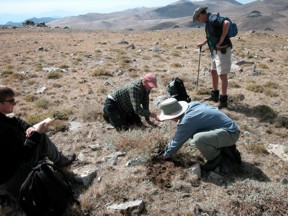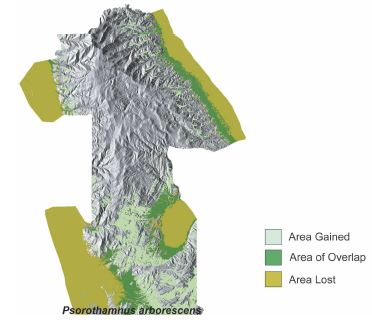 Goal: Assess ecological and conservation implications of climate change for montane ecosystems.
Goal: Assess ecological and conservation implications of climate change for montane ecosystems.
The Problem: Climate change, together with habitat loss/fragmentation and invasion of non-native species,
poses profound challenges for conservation in montane ecosystems, with substantial risks to ecosystem integrity
and the viability of native species.
Scientific Foundations for Conservation: Creekside Science is working to assess ecological impacts of climate change and develop conservation plans for montane ecosystems. Global climate change translates locally into corresponding shifts of microclimate gradients, with potential habitat for some species increasing and for others decreasing. For example, distributions of plant species such as big sagebrush (Artemisia tridentata), currently most common in warmer, drier habitat of lower elevations, are expanding in higher elevation microsites as temperature rises. At the same time, populations of higher-elevation species are becoming more fragmented and shifting from south-facing slopes to cooler north-facing slopes. Microclimate shifts also cause additional non-linear, cross-scale changes in processes such as fire cycles and pathogen outbreaks.

Elements of Conservation:
- Habitat characterization: map current habitat using microclimatic models of key conditions (temperature, precipitation, solar exposure, soil moisture, etc.);
- Habitat changes: evaluate shifts in microclimate maps based on likely climate change scenarios;
- Biotic responses: predict shifts in distribution of native species likely to result from microclimate shifts
- Conservation planning: develop management and mitigation plans to protect montane biodiversity and ecosystem services under future climatic conditions;
- Education and outreach: communicate with diverse audiences (public, landholders, resource managers, decision makers, elected officials, etc.) through various media (press, field tours, web sites, briefing papers, presentations, brochures, etc.)


Download the Climate Change and Conservation of Montane Ecosystems Vision
